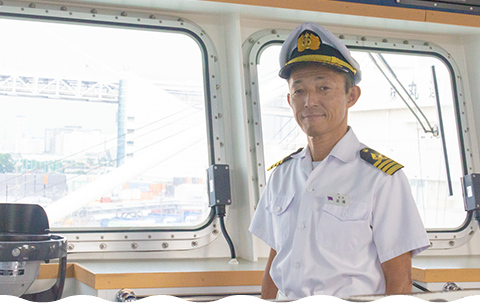
A. The company was established in 1969, the year after the Ogasawara Islands were returned to Japan, and it operates the Ogasawara Maru, which regularly runs between the Port of Tokyo and Futami Port on Chichijima in the Ogasawara Islands. The Ogasawara Maru carries both passengers and cargo between Tokyo and Chichijima, a distance of about 1,000 km, and the voyage takes roughly 24 hours. The ship serves as a lifeline for residents of the island and the only means of transportation for tourists.
A. I joined the company in 1987 at the age of 21, when the first Ogasawara Maru (a 3,553-ton vessel) was still in service, and served as a deckhand. At the time, I was overjoyed at being able to learn so much about ships. I became third officer at the age of 31. I later became second officer, and then first officer at the age of 40. The first officer is allowed to stand in when the regular captain is on leave. And I have been serving as captain since November 2010.
A. I decided that I wanted to work on a ship when I was considering my future career path in high school. I also wanted to go overseas, and I was fascinated by jobs related to the sea. One of the reasons was that I had taken a trip on the Ogasawara Maru. I was also interested in routes to remote islands, and that former contact with Ogasawara Kaiun Co., Ltd. is what led me to my current position.
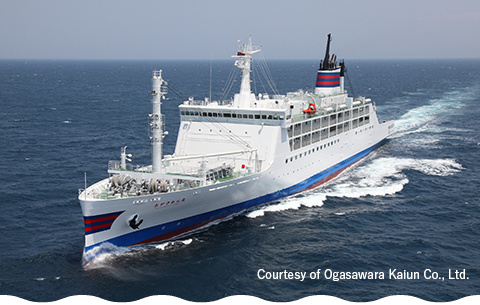
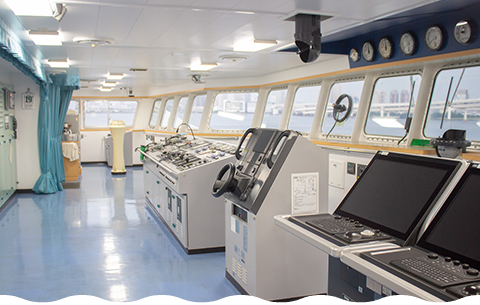
A. First of all, I need to remain aware of the weather and sea conditions. I gather the information I need to deal with poor visibility in Tokyo Bay during the rainy season, as well as rough water conditions caused by typhoons in summer and seasonal winds in winter, among other examples. Then, I consult with the dispatcher to manage and plan the overall voyage. I also operate the ship in waters where many other ships are gathered, as well as when entering and leaving port. If visibility is poor when entering or leaving Tokyo Bay, such as due to high waves, the rainy season, or atmospheric gases, I give instructions to the crew on the bridge. The current Ogasawara Maru, the third ship to sail under that name, is a 11,035-ton vessel, and it is able to make the trip faster than its predecessor. It also has greater stability while underway and better facilities. Nevertheless, I am still responsible for the lives of those on board, and I remain vigilant and ready to act at a moment’s notice while we are underway.
A. I give top priority to the safe transport of passengers and cargo. In some cases, we have turned back to Chichijima due to a passenger suddenly falling ill or to treat a child suffering an allergic reaction. We have also transferred passengers who had been injured or who were feeling unwell from the Ogasawara Maru to a Japan Coast Guard boat or helicopter. The Ogasawara Maru is not simply a cargo ship. It also carries passengers, and we are responsible for their lives, so safety is our top priority. In the past, we would sometimes set sail even when a typhoon was approaching, but now we do not operate in such conditions.
 〈 The Ogasawara Maru (top) and its bridge (bottom) 〉
〈 The Ogasawara Maru (top) and its bridge (bottom) 〉
A. In late May 2005, then-Tokyo Governor Ishihara inspected Okinotorishima Island using the Ogasawara Maru, and I was along as a member of the crew. At the time, I was a second officer, and I prepared the boats and other equipment to be used in the inspection.
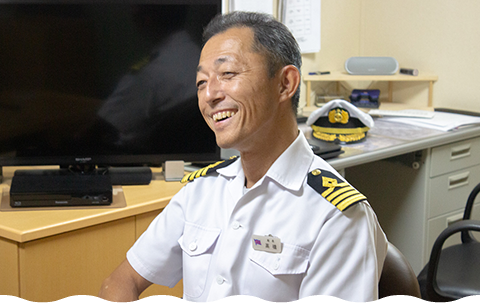
A. When the first inspection tour was planned in 2013, I was supposed to go to Okinotorishima Island as captain, but it was canceled due to a typhoon. Subsequently, three more inspection tours were planned, but they were all canceled due to approaching typhoons or other reasons. So, I was looking forward to being able to go to Okinotorishima Island again, as it is not an easy island to get to.
 〈 In the captain’s cabin on the Ogasawara Maru 〉
〈 In the captain’s cabin on the Ogasawara Maru 〉
A. The sea was calm throughout the entire voyage for the inspection tour. Apparently, some people were about to catch sight of dolphins near Chichijima Island soon after we set off. As for nighttime stellar observations, the weather was cloudy on the way there, so the stars weren’t visible, but it was clear on the way back, and we were able to see the Southern Cross just as we were heading east. It was a great opportunity, so I’m glad that we were able to do some stellar observations as well.
A. The sea conditions were good, and we were able to sail around Okinotorishima Island in a stable manner, so I think we were able to inspect the island well. I hope that the people who participated in the inspection tour were pleased.
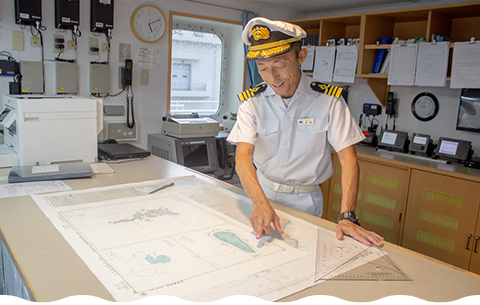
A. Access to Okinotorishima Island is limited, and there are some challenges in getting there. However, I dream of being able to sail with everyone to Okinotorishima Island once every five years or so. Okinotorishima Island is the only Japanese island located south of the Tropic of Cancer, so during the summer solstice, while the sun continues to appear in the southern sky from the point of view of observers here in the north, it appears in the northern sky if viewed from Okinotorishima Island. Next time, I’d like to go during the summer solstice when the sea conditions are good so that we can see the sun to the north, which would be a rare experience for us. I would very much like for people to know more about the charms of the various islands of Tokyo.
 〈 Captain Takahashi explaining the route to Okinotorishima Island on a nautical chart 〉
〈 Captain Takahashi explaining the route to Okinotorishima Island on a nautical chart 〉